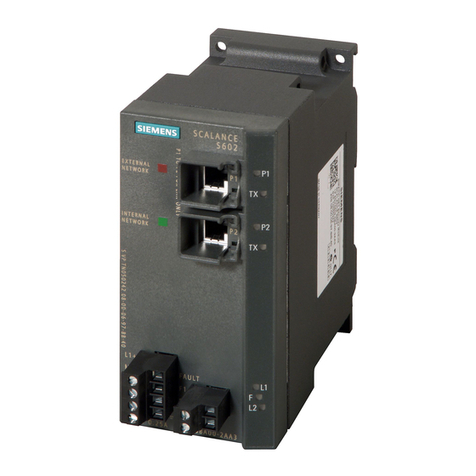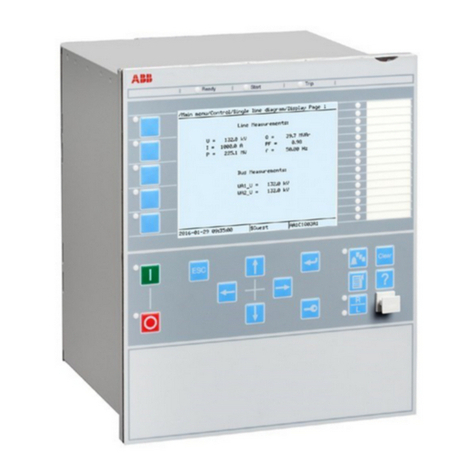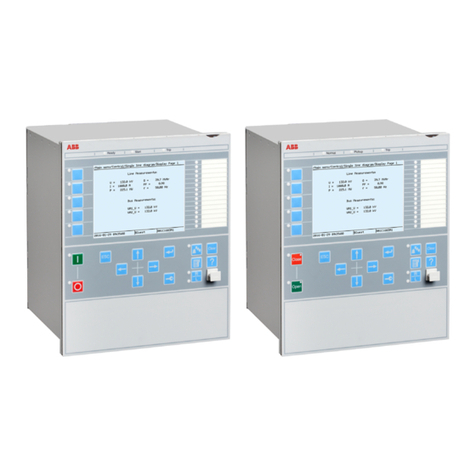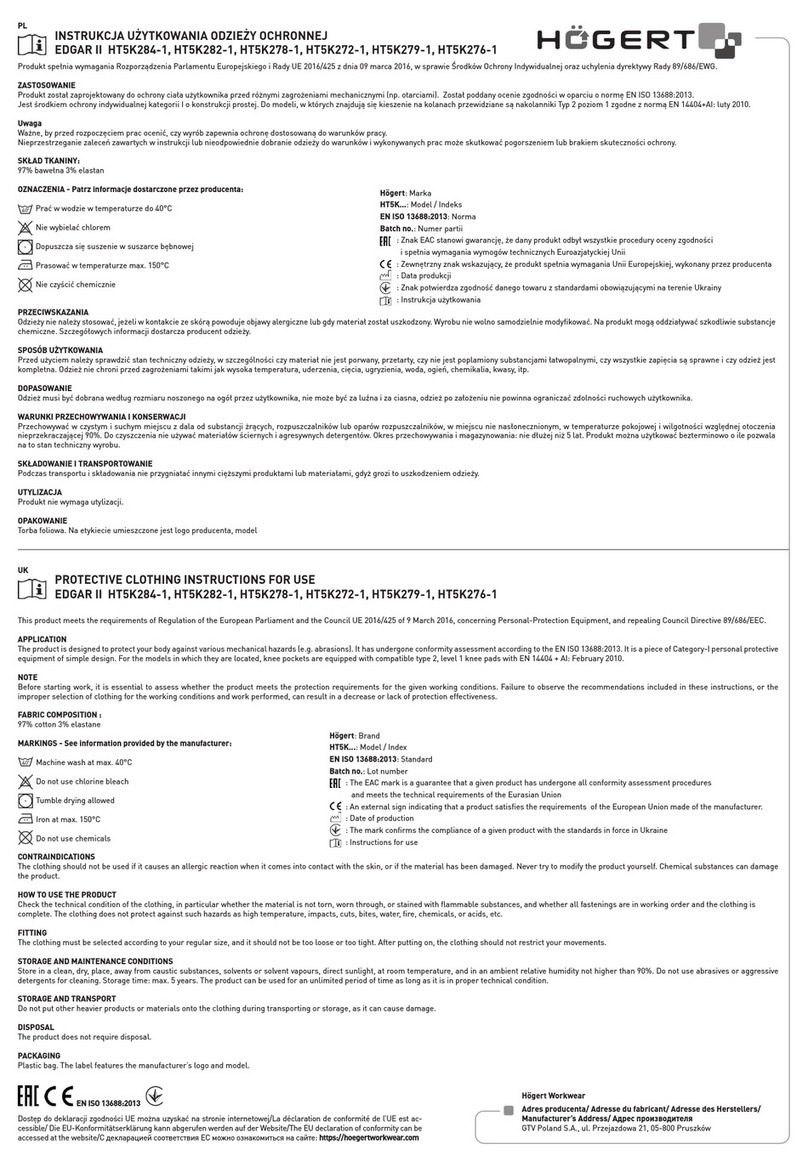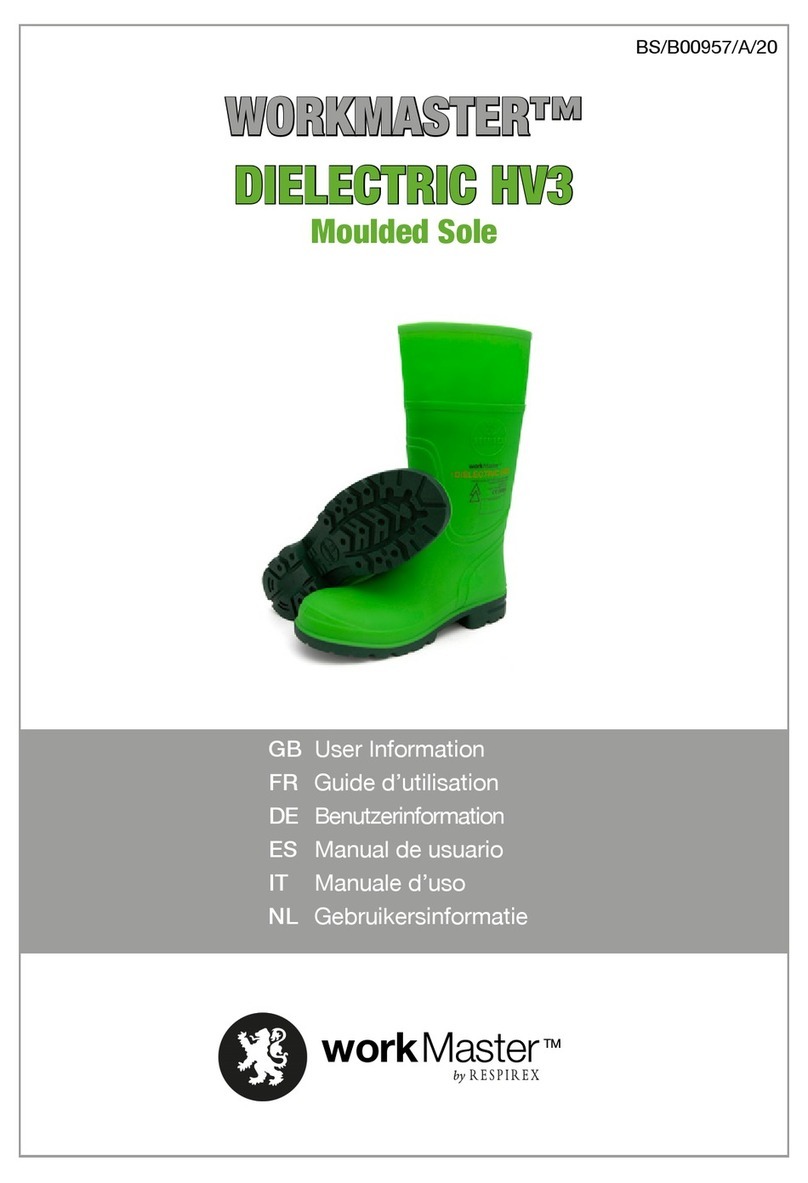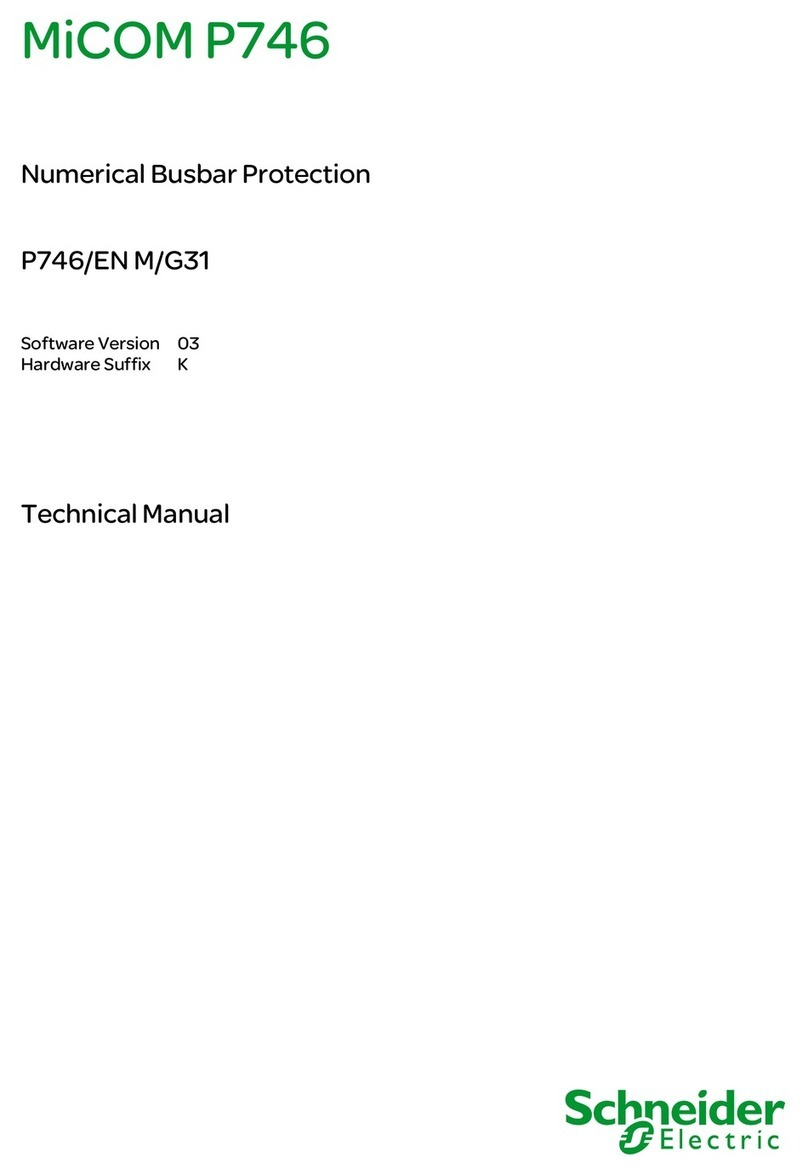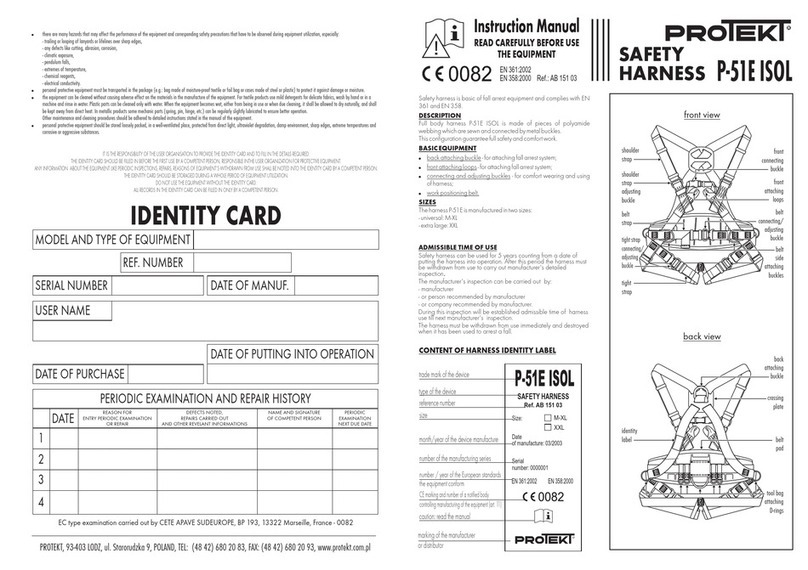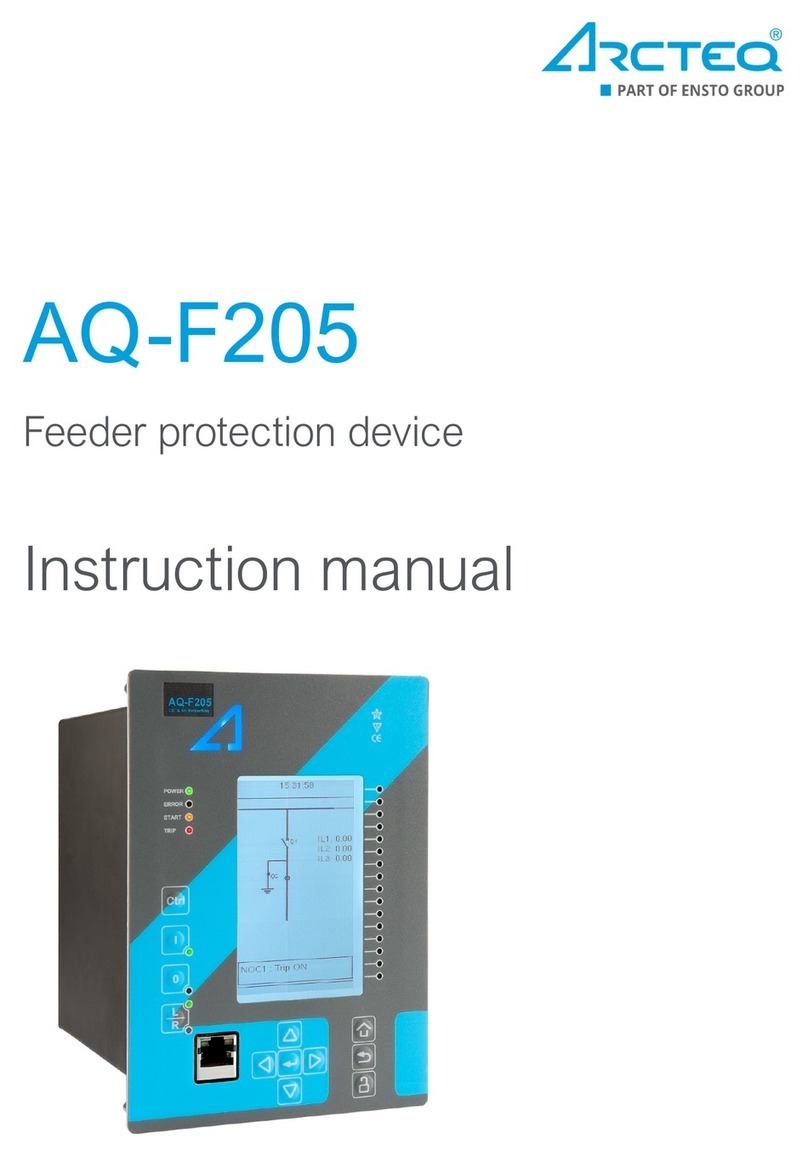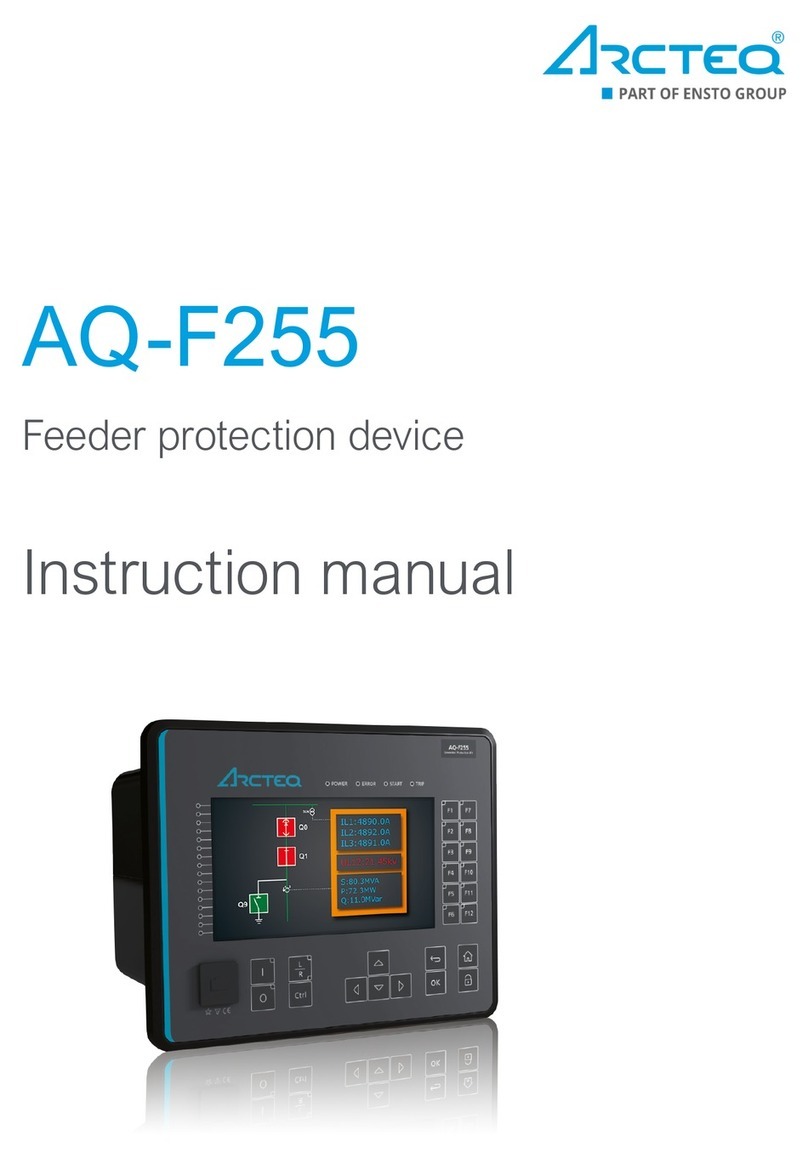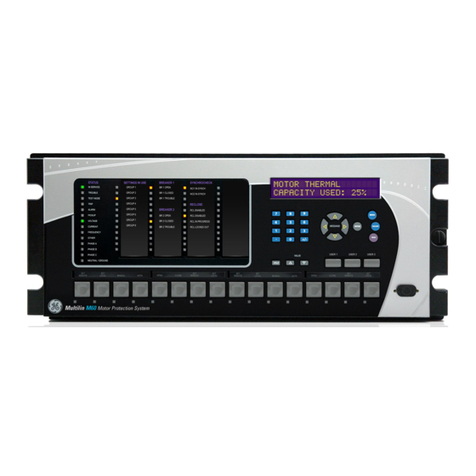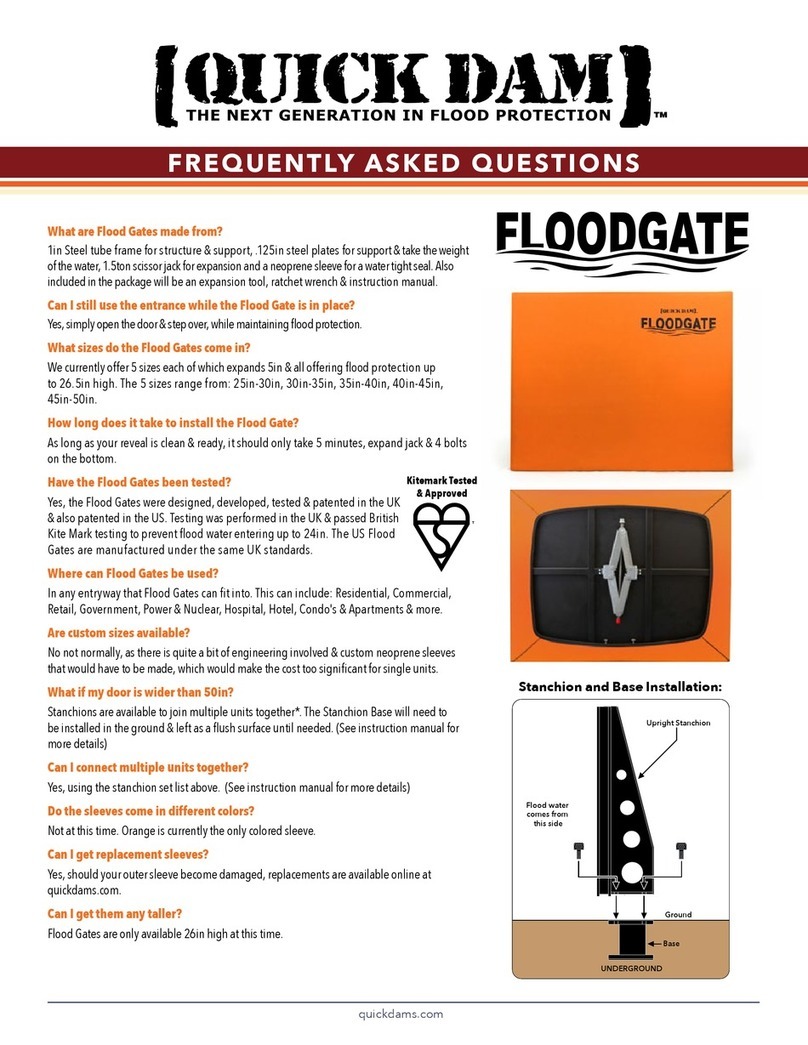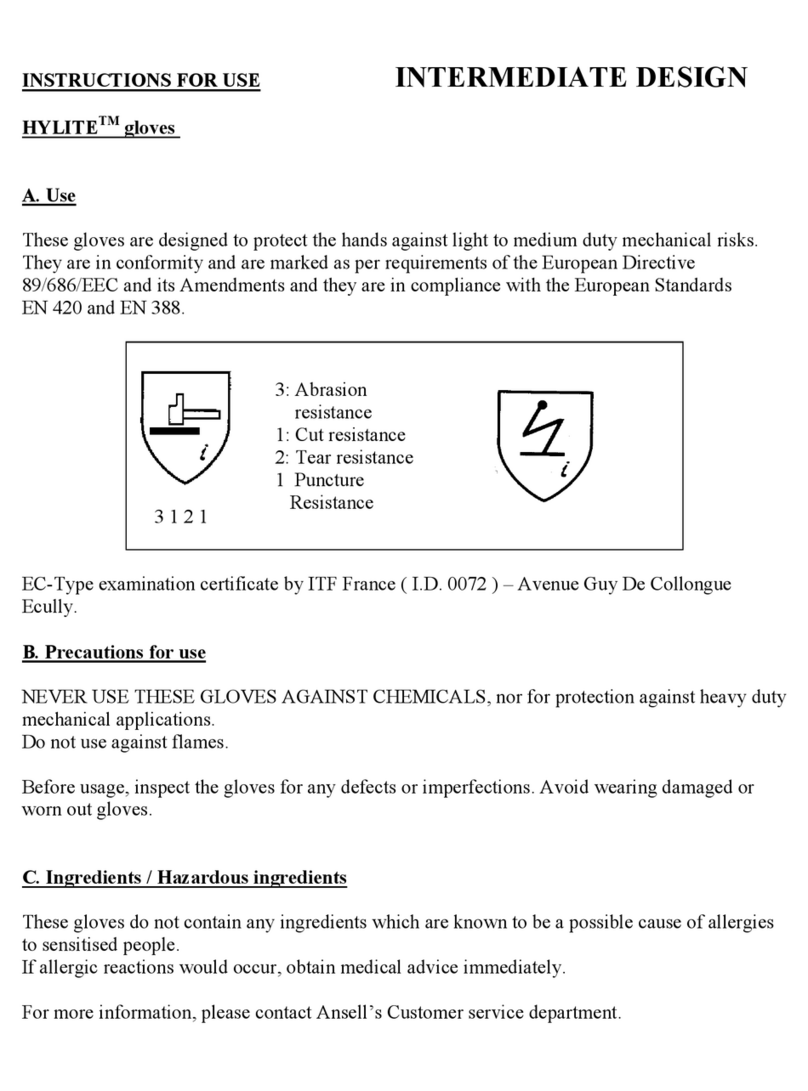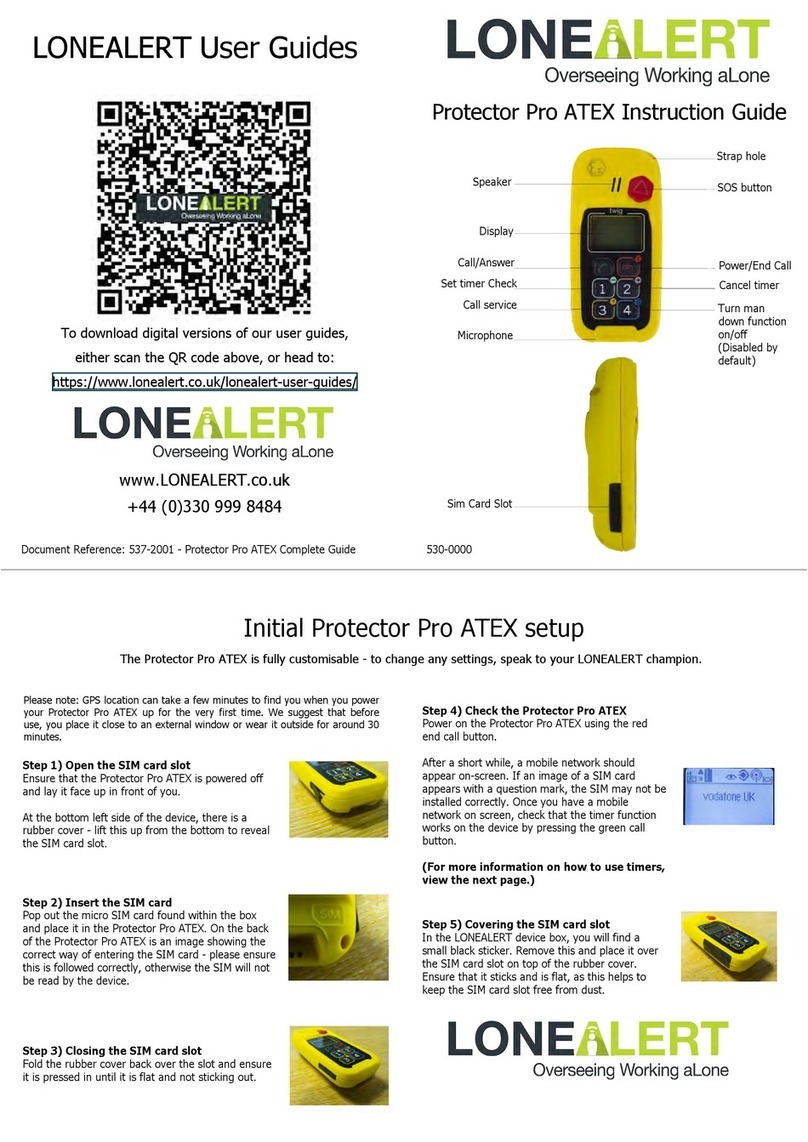Startco FPU-16 User manual

FPU-16 MANUAL
FEEDER PROTECTION UNIT
REVISION 2
NOVEMBER 1997
Copyright ©1997 by Startco Engineering Ltd.
All rights reserved.
Publication: FPU-16-M
Document: S95-FPU-00000
Printed in Canada.

Startco Engineering Ltd. Disclaimer
FPU-16 Feeder Protection Unit
Pub. FPU-16-M, November, 1997 Downloaded from the Internet, see Disclaimer.
DISCLAIMER
This document has been downloaded from the Internet and might not be complete—
document quality and formatting depend on the user's computer. This Internet manual
is intended as a temporary guide—obtain an original document from Startco or from an
authorized Startco distributor.
Specifications are subject to change without notice. Startco Engineering Ltd. is not
liable for contingent or consequential damages, or for expenses sustained as a result
of a malfunction, incorrect application, or incorrect adjustment.

Startco Engineering Ltd. Page i
FPU-16 Feeder Protection Unit Rev. 0
Pub. FPU-16-M, November, 1997 Downloaded from the Internet, see Disclaimer.
TABLE OF CONTENTS
PAGE
TABLE OF CONTENTS...................................................................................... i
LIST OF FIGURES............................................................................................. iii
LIST OF TABLES................................................................................................ iii
1. INTRODUCTION...................................................................................... 1
1.1 FEATURES AND OPTIONS...................................................................... 1
1.2 ORDERING INFORMATION..................................................................... 1
2. FRONT-PANEL ANNUNCIATION, INDICATION, AND PROGRAMMING..... 3
2.1 GENERAL................................................................................................ 3
2.2 LIQUID-CRYSTAL DISPLAY..................................................................... 3
2.3 KEYPAD.................................................................................................. 3
2.4 LED INDICATORS.................................................................................... 5
2.5 PROGRAMMING...................................................................................... 5
2.6 TRIPS AND ALARMS................................................................................ 6
2.7 DEFAULT VALUES................................................................................... 6
3. MODE DESCRIPTIONS............................................................................ 7
3.1 GENERAL................................................................................................ 7
3.2 MODE 0 — I2t LIMIT................................................................................ 7
3.3 MODE 1 — SHORT-TIME OVERCURRENT............................................. 9
3.4 MODE 2 — INSTANTANEOUS OVERCURRENT..................................... 10
3.5 MODE 3 — CURRENT UNBALANCE....................................................... 10
3.6 MODE 4 — EARTH FAULT...................................................................... 11
3.7 MODE 5 — OPTIONS ............................................................................. 12
3.7.1 AUTORESET........................................................................ 12
3.7.2 ALARM LATCH...................................................................... 12
3.7.3 I2t IMMEDIATE RESET.......................................................... 12
3.7.4 SPARE................................................................................. 12
3.7.5 EARTH-FAULT TRIP TIME.................................................... 12
3.7.6 SHORT-TIME TRIP-AND-ALARM TIME.................................. 15
3.7.7 ANALOG-OUTPUT PARAMETER.......................................... 15
3.7.8 RELAY OPERATING MODE.................................................. 15
3.8 MODE 6 — EARTH-FAULT-CT-PRIMARY RATING (Ie)............................. 15
3.9 MODE 7 — PHASE-CT-PRIMARY RATING (Ip) ........................................ 16
3.10 MODE 8 — RATED CURRENT (In)........................................................... 16
3.11 MODE 9 — PERCENT UNBALANCE....................................................... 17
3.12 MODES A, b, & C — AMMETERS ............................................................ 17
3.15 MODE d — PERCENT I2t / TIME-TO-RESET /
EMERGENCY THERMAL RESET.......................................... 17
3.16 MODE E— EARTH LEAKAGE................................................................. 18
3.17 MODE F — OPERATION COUNTER....................................................... 18

Startco Engineering Ltd. Page ii
FPU-16 Feeder Protection Unit Rev. 1
Pub. FPU-16-M, November, 1997 Downloaded from the Internet, see Disclaimer.
TABLE OF CONTENTS
PAGE
4. INSTALLATION ........................................................................................ 19
4.1 GENERAL................................................................................................ 19
4.2 COMPONENT MOUNTING....................................................................... 19
4.2.1 PANEL-MOUNT CONFIGURATION....................................... 19
4.2.2 SURFACE-MOUNT CONFIGURATION.................................. 19
4.2.3 ICT-2 INTERFACE CT........................................................... 19
4.2.4 EFCT-1 AND EFCT-2 EARTH-FAULT CT’S............................ 19
4.3 SHIELDED CABLES................................................................................. 25
4.4 FPU-16 CONNECTIONS.......................................................................... 25
4.4.1 ICT-2 INTERCONNECTION CABLE....................................... 28
4.4.2 POWER SUPPLY................................................................. 28
4.4.3 TRIP-RELAY CONTACTS...................................................... 28
4.4.4 ALARM-RELAY CONTACTS.................................................. 28
4.4.5 OPERATION COUNT INPUT................................................. 29
4.4.6 PROGRAM-CHANGE LOCKOUT.......................................... 29
4.4.7 ANALOG OUTPUT................................................................ 29
4.4.8 COMMUNICATIONS INTERFACE.......................................... 29
4.5 ICT-2 CONNECTIONS.............................................................................. 29
4.5.1 STANDARD CONNECTION................................................... 29
4.5.2 RESIDUAL EARTH-FAULT CONNECTION............................ 30
4.5.3 TWO-CT CONNECTIONS..................................................... 30
4.6 CABLE RESTRAINT................................................................................. 30
5. THEORY OF OPERATION....................................................................... 35
5.1 GENERAL................................................................................................ 35
5.2 DISPLAY MODULE .................................................................................. 35
5.3 POWER-SUPPLY MODULE..................................................................... 35
5.4 PROCESSOR MODULE........................................................................... 35
5.5 ANALOG MODULE................................................................................... 37
5.6 OPTION MODULES ................................................................................. 37
5.7 FIRMWARE.............................................................................................. 37
6. TECHNICAL SPECIFICATIONS................................................................ 38
FPU-16 MANUAL COMPATIBILITY...................................................................... 41
WARRANTY....................................................................................................... 42

Startco Engineering Ltd. Page iii
FPU-16 Feeder Protection Unit Rev. 1
Pub. FPU-16-M, November, 1997 Downloaded from the Internet, see Disclaimer.
LIST OF FIGURES
FIGURE PAGE
1 FPU-16 FRONT PANEL............................................................................ 4
2 FPU-16 CLASS-20 THERMAL CURVE...................................................... 8
3 PANEL-MOUNT FPU-16
OUTLINE AND MOUNTING DETAILS.................................... 20
4 SURFACE-MOUNT FPU-16
OUTLINE AND MOUNTING DETAILS.................................... 21
5 ICT-2 OUTLINE AND MOUNTING DETAILS.............................................. 22
6 EFCT-1 OUTLINE AND MOUNTING DETAILS .......................................... 23
7 EFCT-2 OUTLINE AND MOUNTING DETAILS .......................................... 24
8 SHIELDED CABLE PREPARATION.......................................................... 26
9 TYPICAL FPU-16 CONNECTION DIAGRAM............................................. 27
10 ICT-2 SCHEMATIC................................................................................... 31
11 ICT-2 STANDARD CONNECTIONS .......................................................... 32
12 OTHER ICT-2 CONNECTIONS................................................................. 33
13 CABLE TERMINATION AND RESTRAINT................................................. 34
14 FPU-16 FUNCTIONAL BLOCK DIAGRAM................................................. 36
LIST OF TABLES
TABLE PAGE
1 FPU-16 MODEL NUMBER........................................................................ 2
2 MODE 5—OPTIONS................................................................................ 13
3 MODE 5—OPTIONS (2nd Level without communications interface).......... 14
4 MANUAL REVISION LEVELS.................................................................... 40

Startco Engineering Ltd. Page 1
FPU-16 Feeder Protection Unit Rev. 2
Pub. FPU-16-M, November, 1997 Downloaded from the Internet, see Disclaimer.
1. INTRODUCTION
1.1 FEATURES AND OPTIONS
— I2t thermal protection.
— Overcurrent protection.
— Current-unbalance protection.
— Earth-fault protection.
— Operation counter.
— Front-panel programming.
— Program-change lockout.
— Nonvolatile memory for programmed values and values-at-trip.
— Parameter-selectable, isolated analog output.
— Digital display of:
Load current for Phase A, B, or C
Percent current unbalance
Earth-leakage current
Percent I2t
Meter values-at-trip
Minutes-to-reset
CT-primary ratings
Trip-and-alarm set points
Operation counter.
— Provision for 5-A or 1-A CT's.
— -40°C to 60°C operating temperature.
— Optional dc supply voltage.
— Optional electroluminescent backlit display.
— Optional remote-keypad input.
— Optional RS-485 communications interface.
1.2 ORDERING INFORMATION
— Determine FPU-16 model number from Table 1.
—Supplied with ICT-2, ICT-2 interconnection cable (6 m, 20 ft), and mounting
hardware.
—Order window-type CT (EFCT-1, EFCT-2, or other) for zero-sequence
earth-fault detection.
— Order TU-16 test unit for training or functional testing.

Startco Engineering Ltd. Page 2
FPU-16 Feeder Protection Unit Rev. 2
Pub. FPU-16-M, November, 1997 Downloaded from the Internet, see Disclaimer.
TABLE 1

Startco Engineering Ltd. Page 3
FPU-16 Feeder Protection Unit Rev. 1
Pub. FPU-16-M, November, 1997 Downloaded from the Internet, see Disclaimer.
2. FRONT-PANEL ANNUNCIATION, INDICATION, AND PROGRAMMING
2.1 GENERAL (See Figure 1)
FPU-16 modes are listed on the front panel. Modes 0 to 4 are used to enter trip-
and-alarm set points and to annunciate trips and alarms. Mode 5 is used to
select options. Modes 6, 7, and 8 are used to enter CT-primary ratings and
rated current. Modes 9 to F are used to display metered values and
values-at-trip.
2.2 LIQUID-CRYSTAL DISPLAY
The left digit of the four-digit liquid-crystal display uses a hexadecimal format
(0 to F) to indicate the mode displayed. The remaining digits (designated from
left to right as value digits 1, 2, and 3) display set-point values, meter readings,
and trip-and-alarm codes.
For value digits greater than 999, the last value digit is replaced by E to indicate
an extended range. To obtain the actual value, multiply the reading by 100. For
example, 30E is read as 3000.
2.3 KEYPAD
Four keypad switches provide the operator interface to the FPU-16.
Tactile-feedback switches are used to provide positive indication that switch
contact has been made:
RAMP — This switch is used to adjust values in Modes 0 to 8. Under normal
operation this switch is inoperative. To make the RAMP switch
operative, the program-change lockout must be defeated by
connecting FPU-16 terminals 20 and 21. To change a set point,
ENTER must be pressed within three seconds after RAMP is
released. If ENTER is not pressed within three seconds, the display
will return to its pre-adjusted value. One arrow up and two arrows
down indicate that the RAMP switch is bidirectional. To ramp up:
press and hold. To reverse: release, press again within one second
and hold.
MODE — This switch is used to select the mode displayed. Bidirectional
operation is the same as for RAMP.
RESET— This switch is used to reset trips and alarms and it is used with
ENTER to reset latched alarms in modes 0 to 4, to do an emergency
thermal reset in Mode d, and to reset the operation counter in Mode
F. It is also used to display current in percent of rated current (Modes
A, b, and C) and time-to-reset (Mode d).

Startco Engineering Ltd. Page 4
FPU-16 Feeder Protection Unit Rev. 0
Pub. FPU-16-M, November, 1997 Downloaded from the Internet, see Disclaimer.
FPU-16 FRONT PANEL
FIGURE 1

Startco Engineering Ltd. Page 5
FPU-16 Feeder Protection Unit Rev. 1
Pub. FPU-16-M, November, 1997 Downloaded from the Internet, see Disclaimer.
ENTER —This switch is used to enter values in Modes 0 to 8, and to access a
second level in modes 0 to 5 and 8 to F. Values can be entered only
when the program-change lockout is defeated. This prevents
unauthorized or unintentional program changes during normal
operation. When the program-change lockout is defeated, the value
displayed in Modes 0 to 8 will be entered if ENTER is pressed within
three seconds after RAMP is released.
In Modes 0 to 5, the second-level set point will be displayed while
ENTER is pressed. In Modes 9 to E, the value immediately prior to
the most recent trip will be displayed while ENTER is pressed. If the
program-change lockout is defeated, the second level in Modes 0 to 5
will remain displayed for three seconds after ENTER is released to
allow RAMP to be pressed to initiate a second-level program change.
2.4 LED INDICATORS
The red TRIP/ALARM LED is on if a trip or alarm has occurred. It flashes when
the program-change lockout is defeated (program enable active); however, ON
has priority over FLASH. The green PROCESSOR LED is on when the
processor is functional.
2.5 PROGRAMMING
The FPU-16 has individual trip-and-alarm control relays and all trip-and-alarm
set points can be individually adjusted or deleted. At the top of each set-point
range, the delete code "ddd" is displayed. If "ddd" is entered, the set point is
deleted and the associated protection is disabled.
To enable program changes, the program-change lockout must be defeated by
connecting FPU-16 terminals 20 and 21. Remove this connection when
programming is completed. This will prevent unauthorized or unintentional
program changes.
To program trip set points in Modes 0 to 4 and the first level in Modes 5 to 8:
— Press MODE to select the mode,
— press RAMP to adjust, and within three seconds of release,
— press ENTER.

Startco Engineering Ltd. Page 6
FPU-16 Feeder Protection Unit Rev. 1
Pub. FPU-16-M, November, 1997 Downloaded from the Internet, see Disclaimer.
To program alarm set points in Modes 0 to 4 and the second level in Mode 5:
— Press MODE to select the mode,
— press ENTER, and within three seconds of release,
— press RAMP to adjust, and within three seconds of release,
— press ENTER.
All programmed values and values-at-trip are stored in a nonvolatile memory
that retains its data indefinitely—even if supply voltage is lost. It is not
necessary to reprogram the unit when supply voltage is restored.
2.6 TRIPS AND ALARMS
When a trip occurs:
— The trip relay operates,
— the red TRIP/ALARM LED comes ON,
— the display automatically switches to the mode that initiated the trip, and
— the mode digit is followed by a trip code.
With the exception of autoreset which can be enabled for Mode 0, all trips must
be individually reset.
When an alarm occurs:
— The alarm relay operates,
— the red TRIP/ALARM LED comes ON, and
— the display does not switch to the mode that initiated the alarm; however,
— an alarm code is displayed if the mode that initiated the alarm is selected.
Unless latching alarms are selected in Mode 5, alarms automatically reset when
conditions return to normal. See Section 3.7.2 and Table 2.
2.7 DEFAULT VALUES
A set of default values are preprogrammed at the factory. Default values are
listed in their respective mode descriptions in Section 3.
To reload factory default values:
— Remove the supply voltage,
— connect FPU-16 terminals 20 and 21 to enable program changes, and
— with RESET pressed, apply the supply voltage.

Startco Engineering Ltd. Page 7
FPU-16 Feeder Protection Unit Rev. 1
Pub. FPU-16-M, November, 1997 Downloaded from the Internet, see Disclaimer.
3. MODE DESCRIPTIONS
3.1 GENERAL
This section contains a description of each mode. It explains operational
characteristics, describes special functions, and lists set-point ranges, display
codes, and default values.
3.2 MODE 0 — I2t LIMIT
This mode is used to enter long-time overcurrent set points and to annunciate
long-time overcurrent alarms and trips.
Thermal protection provided by the FPU-16 is based upon a constant I2t
characteristic that is defined by the Mode-0 set point and the rated current (In)
programmed in Mode 8. The Mode-0 set point is the time, in seconds, required
for the FPU-16 to trip at 6 x In. The Mode-0 set point is determined by equating
I2t at 6 x Into the allowable thermal rating. For example, if the allowable thermal
rating is 2 x Infor 3 minutes, the I2t limit is:
62x t = 22x 180, and
t = 20 seconds—this is the Mode-0 set point.
One of the 45 available protection curves is shown in Figure 2. The largest of
the three phase currents is used for the I2t thermal model and the 0%-I2t curve is
the maximum-time-to-trip curve for current above In. Current above Incauses I2t
to tend toward a limit above 100%, and current below Incauses I2t to tend toward
a limit that is less than 100% as shown in the inset graph in Figure 2. In all
cases, I2t responds exponentially toward its final value with a time constant
derived from the Mode-0 set point so that I2t tracks used thermal capacity.
Used thermal capacity determines the time-to-trip for excursions above In. For
the Class-20 example shown in Figure 2, sustained operation at 0.87 x Inwill
ultimately result in a used thermal capacity of 75% and the time to trip for
current above Inwill be reduced as shown by the 75%-I2t curve.
The FPU-16 trips in Mode 0 when I2t reaches 100%. A Mode-0 trip cannot be
reset until I2t has decreased to 30% unless Mode 5 has been programmed to
allow an immediate reset. See Section 3.7.3 and Table 2. If Mode 5 has not
been programmed to allow an immediate reset, the time required for I2t to
decrease to 30% is a function of the derived time constant. Percent I2t and
minutes-to-reset are displayed in Mode d. The FPU-16 can be programmed in
Mode 5 to automatically reset when I2t decreases to 30%. See Section 3.7.1 and
Table 2.

Startco Engineering Ltd. Page 8
FPU-16 Feeder Protection Unit Rev. 0
Pub. FPU-16-M, November, 1997 Downloaded from the Internet, see Disclaimer.
FPU-16 CLASS-20 THERMAL CURVE
FIGURE 2

Startco Engineering Ltd. Page 9
FPU-16 Feeder Protection Unit Rev. 0
Pub. FPU-16-M, November, 1997 Downloaded from the Internet, see Disclaimer.
All programmed values and values-at-trip are stored in nonvolatile memory.
When data are retrieved from this memory, error-detection techniques check for
corrupted data. If data are suspect, the unit will trip, “0bAd” will be displayed,
and default values will be loaded. If “0bAd” is displayed, defeat the program-
change lockout, reprogram the unit, and reset Mode 0.
Set-Point Range.................................... 1 s to 45 s @ 6 x In
Set-Point Step Size............................... 1 s
Display Codes:
Trip............................................. 0FFF
Alarm.......................................... 0AAA*
Set Point Deleted........................ 0ddd*
Memory Error.............................. 0bAd
Default Values:
Trip............................................. 10 s @ 6 x In
Alarm.......................................... 9 s @ 6 x In
* Alarm is on when I2t (Alarm Set Point/Trip Set Point) x 100%. Deleting
the TRIP function automatically deletes the ALARM function.
3.3 MODE 1 — SHORT-TIME OVERCURRENT
This mode is used to enter short-time overcurrent set points and to annunciate
short-time overcurrent alarms and trips.
The short-time overcurrent trip-and-alarm time is selected in Mode 5. Four trip-
and-alarm times are available as 3-, 6-, 12-, and 24-cycle minimums. See Table
2.
Set-Point Range.................................... 1 to 9 x CT-Primary Rating
Set-Point Step Size............................... 0.1 x CT-Primary Rating
Trip-and-Alarm Times............................ 3, 6, 12, or 24 cycles
Trip-and-Alarm Time Accuracy............... +3, -0 cycles
Display Codes:
Trip............................................. 1FFF
Alarm.......................................... 1AAA
Set Point Deleted........................ 1ddd
Default Values:
Trip Time .................................... 3 cycles
Trip Level.................................... 7 x CT-Primary Rating
Alarm Level................................. 5 x CT-Primary Rating

Startco Engineering Ltd. Page 10
FPU-16 Feeder Protection Unit Rev. 0
Pub. FPU-16-M, November, 1997 Downloaded from the Internet, see Disclaimer.
3.4 MODE 2 — INSTANTANEOUS OVERCURRENT
This mode is used to enter instantaneous overcurrent set points and to
annunciate instantaneous overcurrent alarms and trips. The instantaneous
overcurrent trip-and-alarm time is fixed.
Set-Point Range.................................... 1 to 9 x CT-Primary Rating
Set-Point Step Size............................... 0.1 x CT-Primary Rating
Trip-and-Alarm Time.............................. 0.25 to 3 cycles
Display Codes:
Trip............................................. 2FFF
Alarm.......................................... 2AAA
Set Point Deleted........................ 2ddd
Default Values:
Trip............................................. Deleted
Alarm.......................................... Deleted
3.5 MODE 3 — CURRENT UNBALANCE
This mode is used to enter current-unbalance set points and to annunciate
current-unbalance alarms and trips. Two equations are used to calculate
current unbalance.
For Imax ≤0.5 x In:
()
[]
Unbalance I I In
=− ×
max min / 100% (3.1)
For Imax >0.5 x In:
()
[]
Unbalance I I I=− ×
max min max
/ 100% (3.2)
Where: Imax = maximum phase current
Imin = minimum phase current
In= rated current
Set-Point Range.................................... 5% to 75%
Set-Point Step Size............................... 1%
Trip Time............................................... 5 s
Alarm Time............................................ 1 s
Alarm Hysteresis ................................... 2%
Display Codes:
Trip............................................. 3FFF
Alarm.......................................... 3AAA
Set Point Deleted........................ 3ddd

Startco Engineering Ltd. Page 11
FPU-16 Feeder Protection Unit Rev. 1
Pub. FPU-16-M, November, 1997 Downloaded from the Internet, see Disclaimer.
Default Values:
Trip............................................. 25%
Alarm.......................................... 15%
3.6 MODE 4 — EARTH FAULT
This mode is used to enter earth-fault set points and to annunciate earth-fault
alarms and trips. Set points are expressed in percent of the earth-fault-CT-
primary rating entered in Mode 6.
Optional CT’s (EFCT-1 or EFCT-2) with 5-A-primary ratings are available for
sensitive earth-fault detection in applications where earth-fault current is less
than 100 A and surge current is less than 2.5 kA. If surge current is greater
than 1 kA but less than 2.5 kA, a flux conditioner should be used to prevent
nuisance tripping. If earth-fault current is greater than 100 A, surge current is
greater than 2.5 kA, or if a trip level greater than 5 A is required, use a 5-A- or
1-A-secondary earth-fault CT that will not saturate at the prospective currents.
Earth-fault current can be derived from the phase currents by using the ICT-2
residual connection. See Section 4.5.2. When this connection is used, the
primary rating of the earth-fault CT is the same as the phase CT's. Due to CT
errors, trip set points should be greater than 10% with the residual connection.
Earth-fault detection in a two-CT configuration requires an earth-fault CT. Do
not use a residual-type connection with two phase-CT's because an earth fault
in the derived phase will not be detected.
Four earth-fault-trip times are available. See Section 3.7.5 and Table 2.
Set-Point Range.................................... 1% to 100% of Earth-Fault-
CT-Primary Rating
Set-Point Step Size............................... 1%
Trip Time............................................... 3, 6, 12, or 24 cycles
Alarm Time............................................ 12 cycles
Trip-and-Alarm-Time Accuracy............... +3, -0 cycles
Display Codes:
Trip............................................. 4FFF
Alarm.......................................... 4AAA
Set Point Deleted........................ 4ddd
Default Values:
Trip Time .................................... 3 cycles
Trip Level.................................... 40%
Alarm Level................................. 20%

Startco Engineering Ltd. Page 12
FPU-16 Feeder Protection Unit Rev. 0
Pub. FPU-16-M, November, 1997 Downloaded from the Internet, see Disclaimer.
3.7 MODE 5 — OPTIONS (See Tables 2 & 3)
This mode is used to select special program options. Any combination in Tables
2 and 3 can be selected by entering the appropriate hexadecimal numbers in
Mode 5 in the same way that trip-and-alarm set points are entered in Modes 0 to
4.
Default Values:
Table 2....................................... 5000
Table 3....................................... 5000
3.7.1 AUTORESET
When autoreset is ON, a Mode-0 trip will automatically reset when I2t decreases
to 30%. See Section 3.2. Autoreset will not occur if I2t IMMEDIATE RESET is
selected. If autoreset is required, disable I2t IMMEDIATE RESET.
Default.................................................. OFF
3.7.2 ALARM LATCH
When the alarm latch is ON, all alarms that occur in Modes 0 to 4 will latch and
must be individually reset. To reset a latched alarm, use MODE to select the
alarm and press ENTER and RESET simultaneously.
Default.................................................. OFF
3.7.3 I2t IMMEDIATE RESET
When I2t IMMEDIATE RESET is ON, I2t will be cleared when a Mode-0 trip
occurs. This will allow an immediate Mode-0 reset when RESET is pressed.
When OFF, Mode-0 reset is not allowed until I2t has decreased to 30%.
3.7.4 SPARE
Not used.
3.7.5 EARTH-FAULT TRIP TIME
Four earth-fault trip times (3, 6, 12, or 24 cycles) are available. See Section 3.6.
Default.................................................. 3 cycles

Startco Engineering Ltd. Page 13
FPU-16 Feeder Protection Unit Rev. 1
Pub. FPU-16-M, November, 1997 Downloaded from the Internet, see Disclaimer.
MODE 5 — OPTIONS
TABLE 2

Startco Engineering Ltd. Page 14
FPU-16 Feeder Protection Unit Rev. 0
Pub. FPU-16-M, November, 1997 Downloaded from the Internet, see Disclaimer.
MODE 5 — OPTIONS
(2nd Level Without Communications Interface)
TABLE 3

Startco Engineering Ltd. Page 15
FPU-16 Feeder Protection Unit Rev. 1
Pub. FPU-16-M, November, 1997 Downloaded from the Internet, see Disclaimer.
3.7.6 SHORT-TIME TRIP-AND-ALARM TIME
Four short-time trip-and-alarm times (3, 6, 12, or 24 cycles) are available. See
Section 3.3.
Default.................................................. 3 cycles
3.7.7 ANALOG-OUTPUT PARAMETER
For units without RS-485 communication interface, the analog output parameter
is selectable as shown in Table 3. When CURRENT is selected, the maximum
of the three phase currents is used.
Current (Mode A, b, or C)...................... 0 to 1.25 In
I2t (Mode d)........................................... 0 to 100%
Earth Leakage (Mode E)........................ 0 to 1 x Ie
Default.................................................. Current
3.7.8 RELAY OPERATING MODE
Each output-relay driver can be independently operated in a fail-safe or non-fail-
safe mode. In the fail-safe mode, the output relays are energized when supply
voltage is on and the unit is not in a trip-or-alarm condition. The output relays
are de-energized if supply voltage is off or if a trip-or-alarm condition occurs.
FPU-16 labelling shows the relays de-energized. In the non-fail-safe mode, the
output relays are energized only during a trip-or-alarm condition.
Default Values:
Trip Relay................................... Fail Safe
Alarm Relay................................ Fail Safe
3.8 MODE 6 — EARTH-FAULT-CT-PRIMARY RATING (Ie)
This mode is used to enter the earth-fault-CT-primary rating. All four digits are
displayed when the earth-fault-CT-primary rating is being adjusted. When the
new rating is entered, the display returns to the three-value-digit format and the
extended-range notation applies for values above 999 A. See Section 2.2.
The primary rating for the EFCT-1 and EFCT-2 is 5 A. If a 5-A- or 1-A-secondary
earth-fault CT is used, the primary rating of the earth-fault CT must be entered.
If the residual connection is used, enter the primary rating of the phase CT’s in
both Modes 6 and 7.
This manual suits for next models
1
Table of contents
